10 Pregnancy Exercises for Strength, Mobility and Pelvic Floor Health
When you’re pregnant, the couch quickly becomes your best friend.
Exercise may be the last thing on your mind during the fatigue of the first trimester or when the aches and pains set in as your belly grows. But research consistently shows that moving during pregnancy is important for physical and mental health, and yes, even helps reduce the pesky aches and pains that make is so hard to move in the first place.
Mirror trainer and lululemon ambassador Rachel Nicks said that when it comes to exercise during pregnancy the focus should be three things: strength, mobility and relaxation.
“Mamas need strength for pregnancy, for birth and postpartum. During pregnancy a woman has to carry a lot of extra weight. Having awareness and strength in your core and pelvic floor can allow for a much more comfortable pregnancy. Lack of strength in the core and pelvic floor creates back pain and can increase chances of diastasis recti,” said Nicks. “Mamas need to have mobility for birth. The squat is the most efficient position to birth in and you don’t want to pop in a squat for the first time during labor. Being a mother includes a lot of lifting. It is important for moms to know how to properly engage their core and pelvic floor to lift and carry baby in a safe and supported manner.”
Knowing what type of movement is safe and most effective during this time has prompted many a Google search. Here’s what you need to know about exercise during pregnancy, plus a pregnancy-safe workout routine to help you build strength and mobility.
What exercises should you avoid during pregnancy?
While continuing (or starting!) an exercise routine is important during pregnancy, there are some modifications to be aware of:
Avoid twisting and crunching movements after 12 weeks. “Twisting and crunching shrink the space for baby and increase the chances for abdominal separation known as diastasis recti,” said Nicks.
Stick to low-impact cardio. “I don’t advise a lot of high-impact exercises or running after the second trimester and up until 8-12 weeks (postpartum) or whenever you feel ready,” said Nicks. “That jumping and bouncing adds a lot of strain to your pelvic floor. Why add load to your pelvic floor with impact when it already has to carry and deliver your baby? I’m a huge risk/ benefit person. If impact can increase my chances of incontinence, is it worth it? NO! Running and jumping are not the only way to achieve cardio.”
What are the best pregnancy exercises?
Nicks said that the most important exercises to include in your workout routine are kegels, ab toning and chest opening stretches to prevent discomfort in the neck, chest and low back.
“Strengthening the upper back is important to prepare for feeding and lifting baby. Strength in the legs and glutes helps prepare for pregnancy, birth and beyond. Strengthening the arms is important because babies and baby gear are heavy!” she added.
Remember: Any movement counts
“Women can fall on either extreme: nothing or too much. Neither are a good choice. Try to fall somewhere in the middle,” said Nicks. “Movement is wonderful for body, mind and spirit. Even when you feel you have nothing in you, try to just move for 15 minutes a day. It could be a simple outdoor walk, gentle yoga or some squats and kegels while you commute or cook dinner.”
If you’re ready to take things up a notch with a strength and mobility workout, here are some pregnancy-safe exercises to try.
10 pregnancy-safe exercises
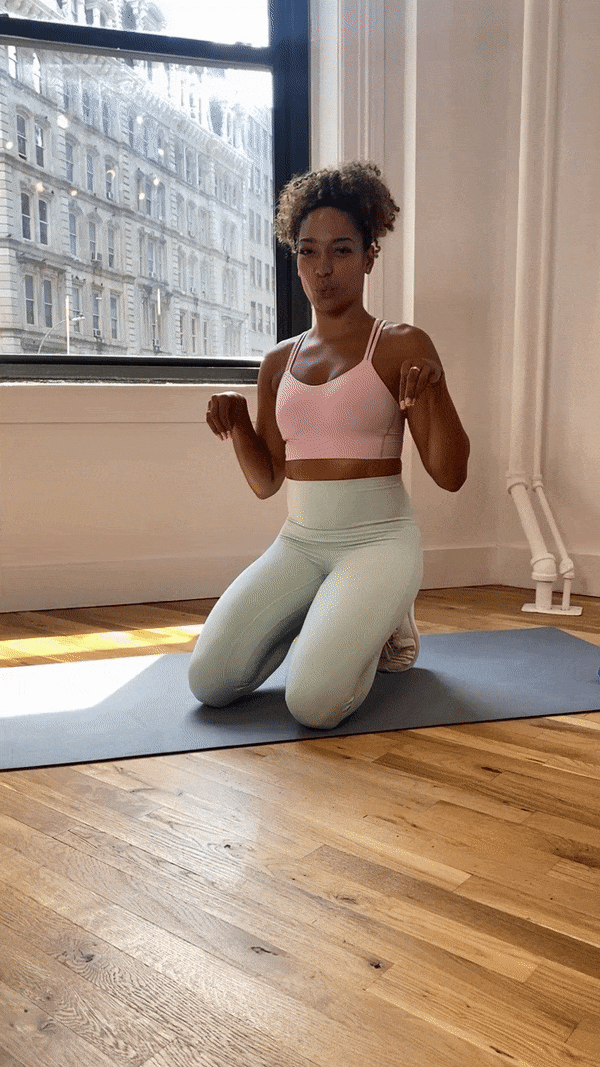
Kegels
Exhale and engage your pelvic floor muscles (it should feel as if you need to use the bathroom and are trying to hold your bladder). Then inhale and relax. You can perform kegels for different lengths of time. Start by engaging/holding for 5-10 seconds and then relaxing. You can also try these other kegel exercises:
Blinks: This moves at a quicker pace. Exhale, engage, inhale, relax. Repeat.
Elevators: Exhale, engage layer 1-2-3 of pelvic floor; Inhale, release layer 3-2-1.
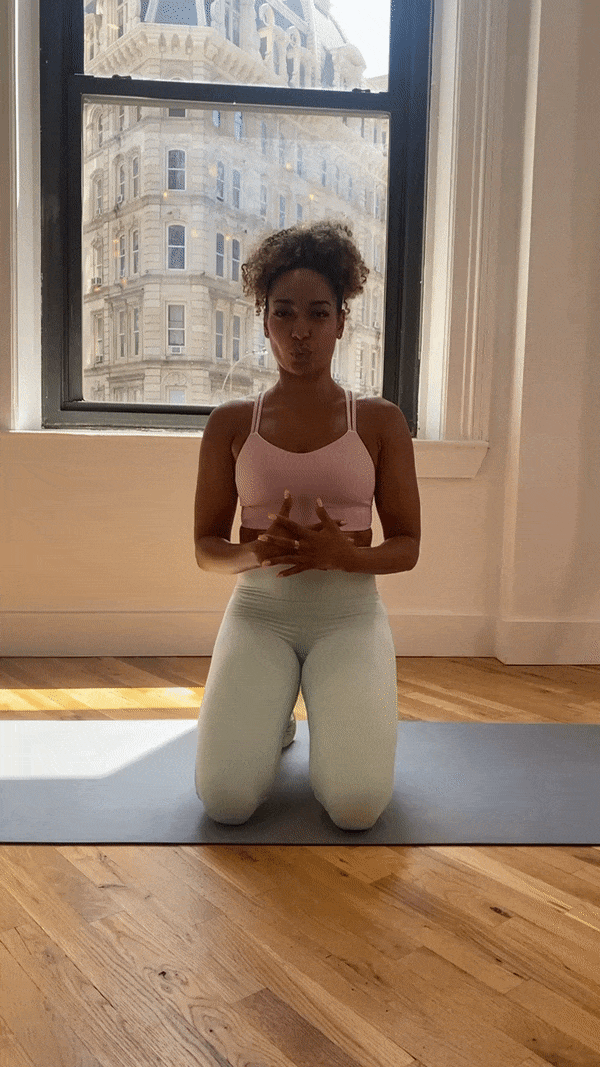
Ab toning
As you exhale, engage your transverse abdominals by tucking the pelvis, and engaging your pelvic floor and core, it should feel as if you are trying to zip into a pair of pants. Then inhale and relax. The transverse abs act like a corset — this is a good visual to keep in mind while engaging.
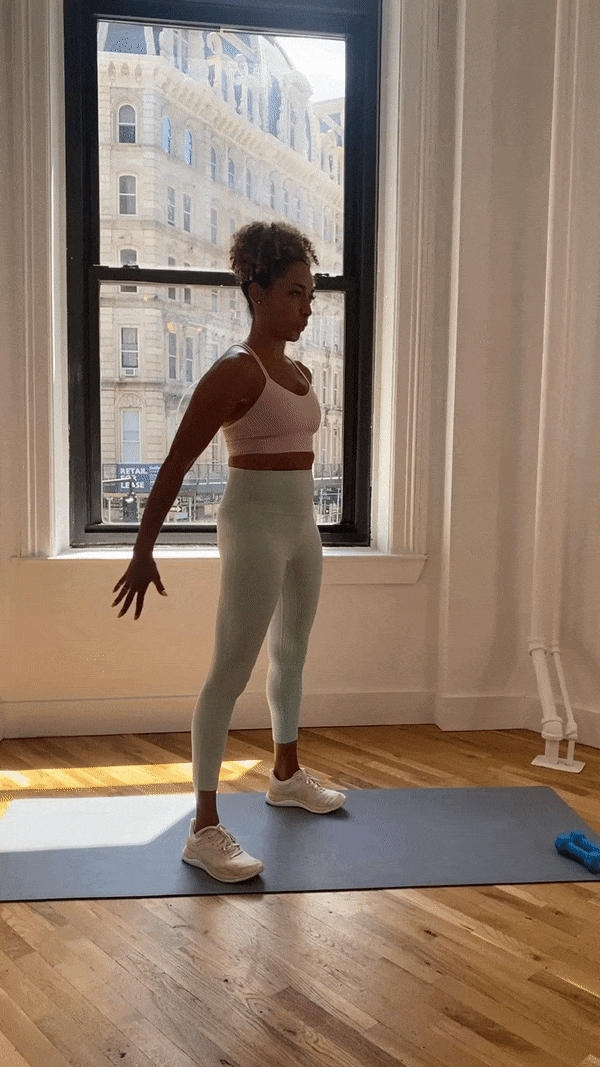
Squat
Inhale as you sit down and back into a squat. Exhale as you push back up to stand.
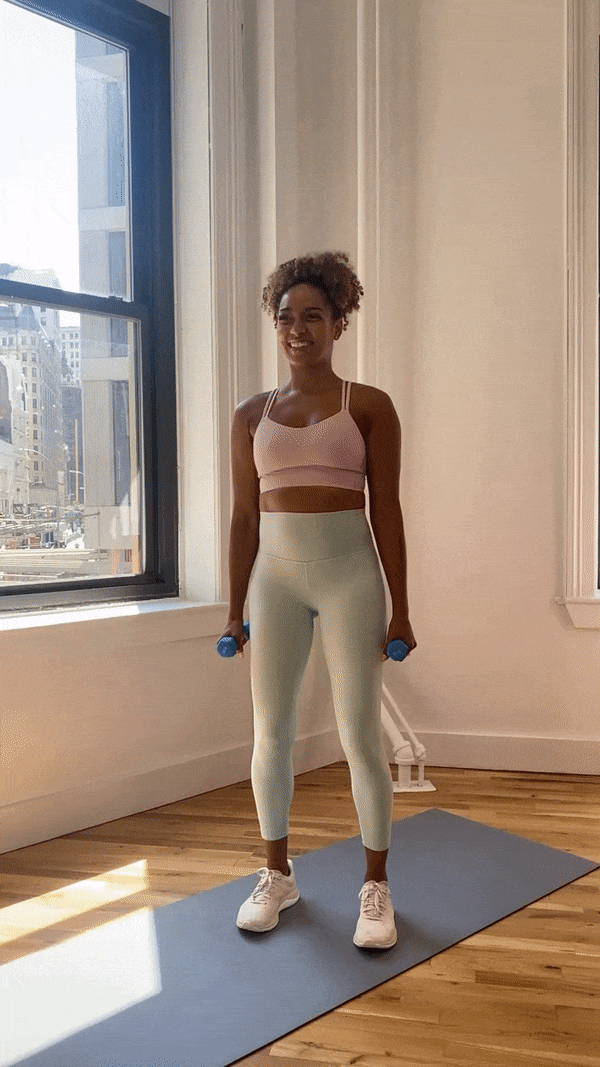
Curl to press
Turn your palms in to face your sides and perform a hammer curl by lifting the dumbbells to your shoulders. Then press both weights up overhead. Make sure to keep your abs and pelvic floor engaged.
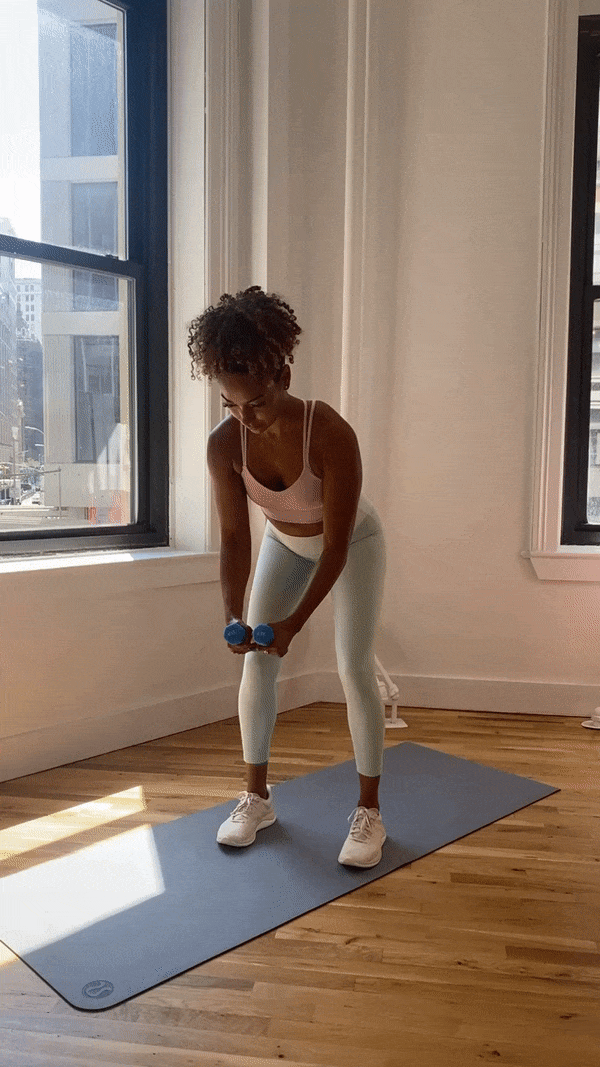
Reverse flies
Hinge forward at the hips and let your arms hang straight down toward the floor. Lengthen your neck and keep your shoulders soft. Exhale as you lift both arms out to the sides, engaging the upper back. Keep your knees bent and core and pelvic floor engaged.
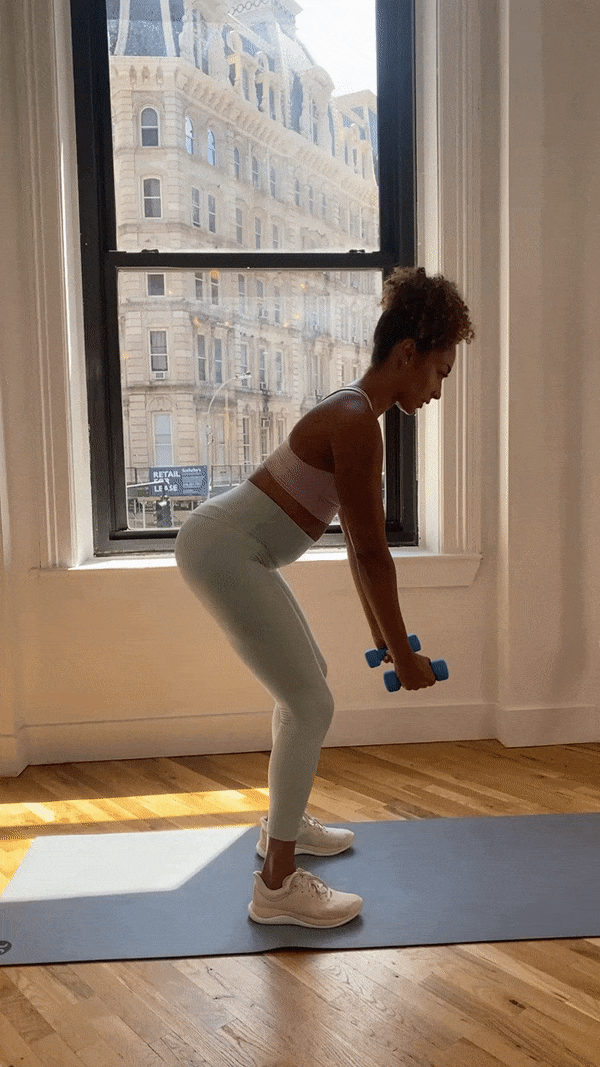
Row to tricep kickback
Hinge forward at the hips and let your arms hang straight down toward the floor. Pull both elbows straight up toward the ceiling into a row. Then, keeping the elbows hugged into your sides, kick the weights up and back behind you.
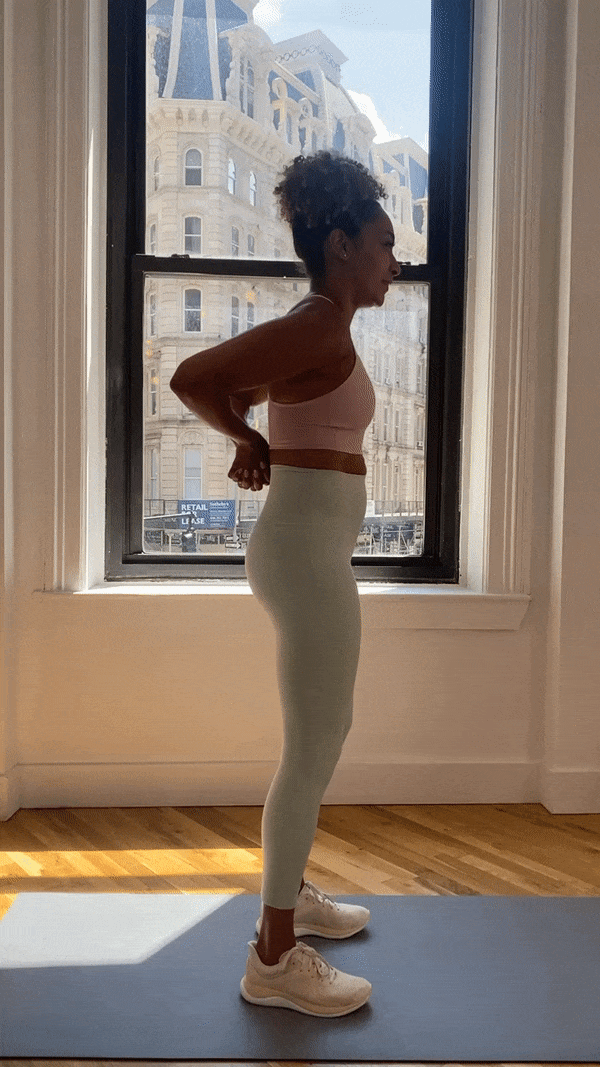
Chest opener
Stand up tall and interlace your fingers behind your back. Try to press your palms together as you pull your fist down toward the floor and exhale. Gaze up. Make sure to roll your shoulders back and down.
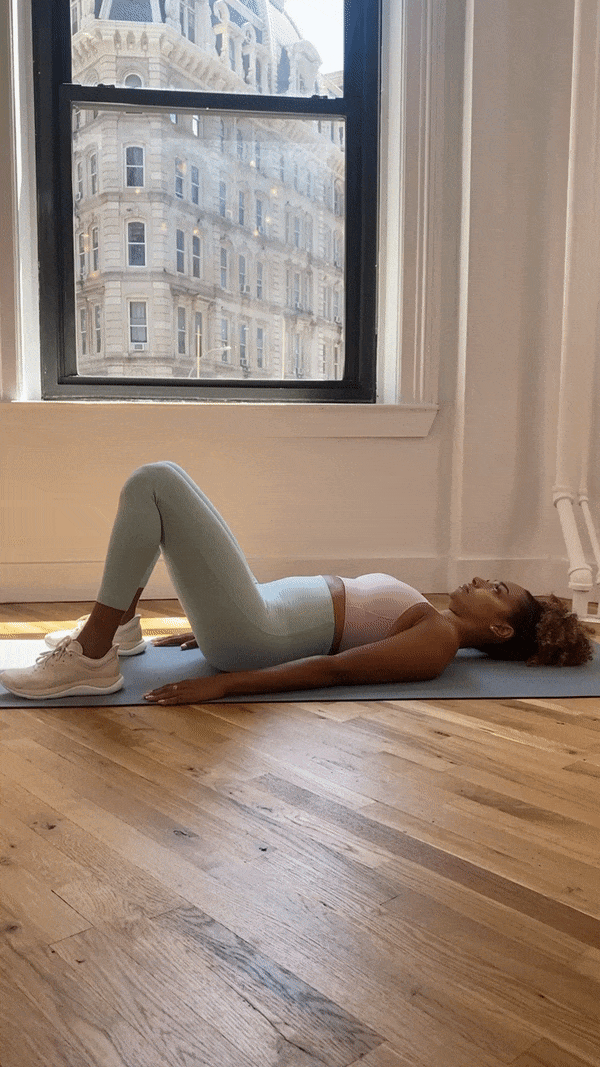
Bridge
Lie on your back with your feet flat on the floor and knees bent. Tuck your tailbone to and engage your core and pelvic floor. Slowly roll up, engaging the abs and glutes, until you form a straight line from your upper back to your knees.
Bridge stretch
Pushing up into a bridge position, keep your knees together and feet slightly wider than hips. This creates internal rotation at the hips and stretches the low back.
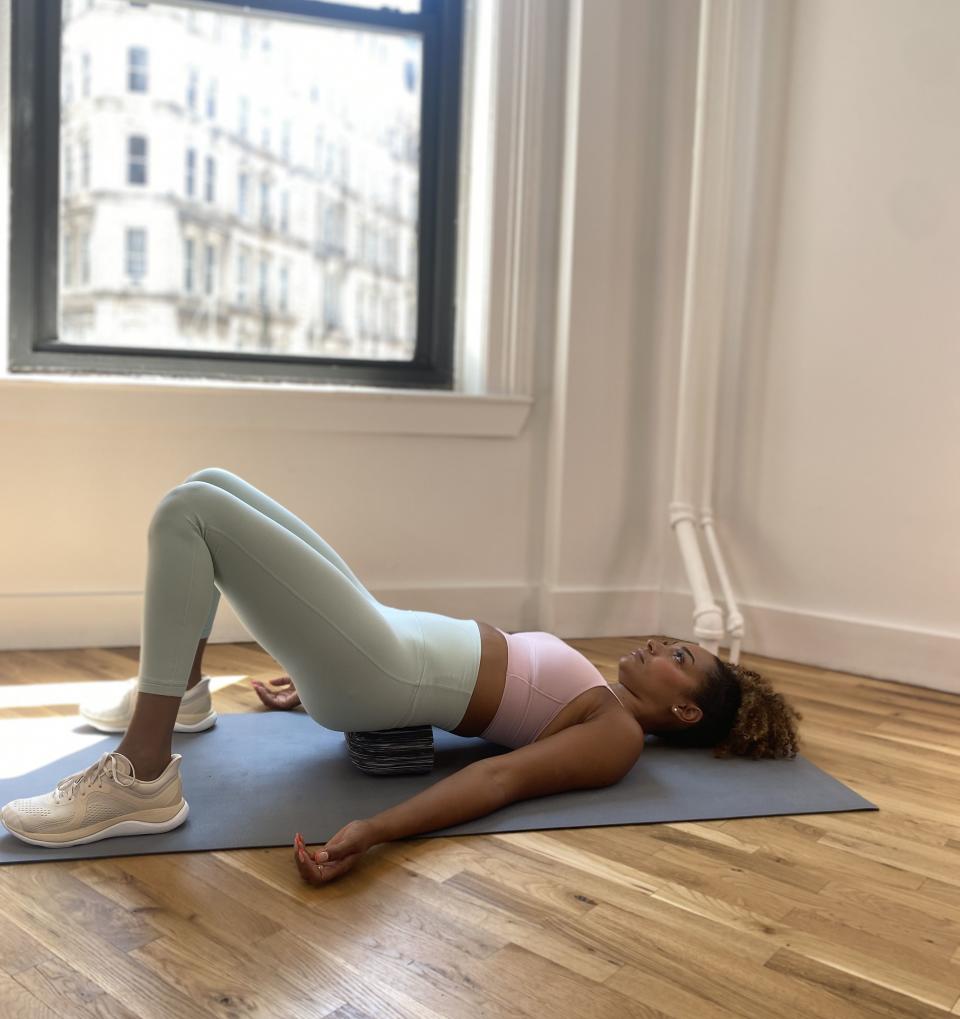
Supported bridge
When performing bridge pose, place a yoga block under your low back. This alleviates tension in the low back and is a safe inversion for pregnancy.
This article was originally published on TODAY.com

